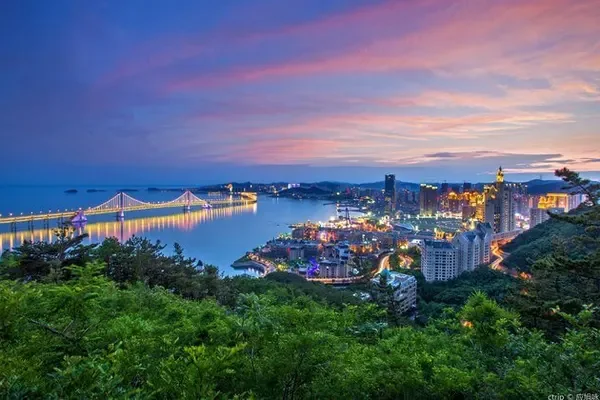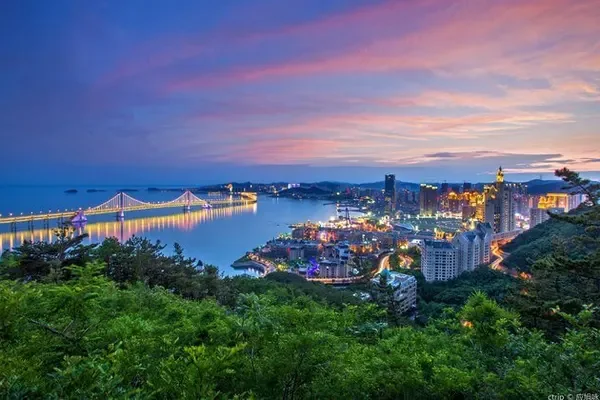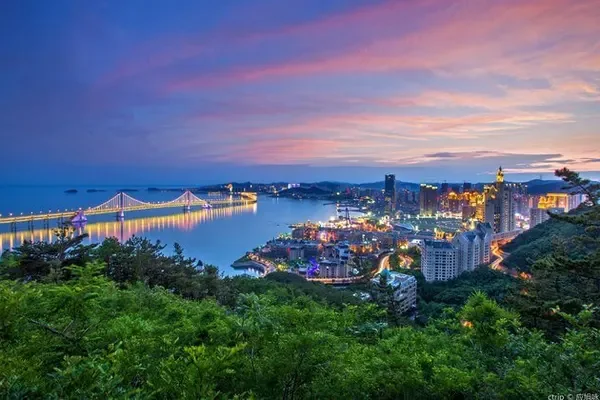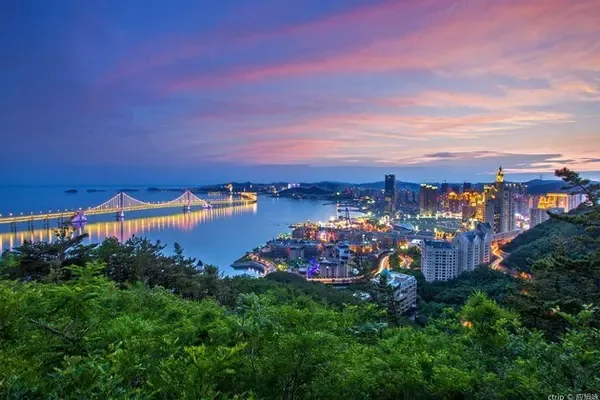The ancient city of Qingzhou in Shandong is one of the ancient Kyushu, with a history of more than 7,000 years of development, a history of civilization of more than 5,000 years, and a glorious capital of twelve years. In order to explore the profound and long history and culture of this ancient city, on the occasion of the Spring Festival this year, Beijing Target Action Cultural Tourism Group organized a four-day "Spring Festival Self-driving Tour in Shandong". journey.

At 9:00 am on February 2, 2022, under the leadership of Zhao Xiangjie, head of Beijing Target Action Cultural Tourism, the reporter was invited to accompany a group of 9 riders including Zhang Qiuyue, Bai Yuchen, Wei Xu, Zhang Huailun, Luo Xiaofang, Wei Xiaoshun, Wang Minghe, Depart from Beijing and embark on a self-driving trip to Shandong.

Perhaps due to the impact of the epidemic, there were few vehicles in the Beijing Majuqiao service area of the Beijing-Shanghai Expressway to the Dagang service area at the second stop of the itinerary, and there was an empty scene in the field of vision. It formed a strong contrast with the bustling scenes of cars and people during festivals in previous years. The road was unimpeded. The convoy passed the Binzhou Yellow River Bridge at 13:30, and entered the ancient city of Qingzhou in Weifang, Shandong at 15:00 after nearly six hours of driving, and stayed at Canaan Zhiyue Boutique B&B Hotel.

The reporter and his party arrived at the first stop, Qingzhou, entered the hotel, put down their bags, and then went to the ancient city that is close to the appointment with Canaan. Walking into the city, the scene of bustling passers-by and red lanterns hanging high immediately makes people feel a strong festive atmosphere.

Looking at the lively and festive scenes of celebrating the Spring Festival in the thousand-year-old city, I often think about the description of the strategy of the ancient city of Qingzhou that I made before I came here. The scene where ancient times and reality are interactively integrated, enjoy the fun of roaming the ancient city in the constant transformation of thinking.

Looking back at history, Qingzhou was one of the "Kyushu" in "Yu Gong" in ancient times, which generally refers to an area from the east of Mount Tai to the Bohai Sea. Qingzhou was the land of Dongyi in ancient times. It is said that after Dayu controlled the water, he divided the whole country into Qing, Xu, Yang, Jing, Yu, Ji, Yan, Yong and Liang nine states according to the direction of mountains and rivers. Qingzhou is the first of the nine states. .

China's oldest geography book "Shangshu`Yugong" says "Haidai is only Qingzhou". The sea is the Bohai Sea, and Dai is Mount Tai. According to "Zhou Li", "Zhengdong is called Qingzhou", and it is commented: "Gai Yitu lives in Shaoyang, and its color is green, so it is called Qingzhou."

Qingzhou is located in the hub of transportation and has a superior geographical location. "There are mountains and rivers on the right, and people who bear the sea on the left." It controls the Peninsula in the east, Yimeng in the south, and the Bohai Sea in the north. It has been an important military town in the past dynasties. Political officials in the Southern and Northern Dynasties and the early Tang Dynasty also took care of the military. During the Tang and Five Dynasties, Qingzhou was the seat of the Pinglu Jiedu envoy.

In the Song and Jin Dynasties, the town navy was set up here. In the Northern Song Dynasty, the Jingdong East Road appeasement envoy was set up here. In the Jin Dynasty, the Shandong East-West Road commanding envoy was set up. Set up Shandong admirals, branch patrol roads, and Haiphong roads, and build the Eight Banners Garrison City.

From March 1948 to April 1949, the East China Bureau was stationed in Qingzhou. Due to Qingzhou's prominent status, there have been many princes entrusted in Qingzhou in history. In the Han Dynasty, Ou was named the fifth prince of Guanghou, Liu Bian was named the third prince of Guanghou, Mainu was named King Zhongjing and King Yi in Yuan Dynasty, and King Qi, King Han and King Heng in Ming Dynasty.

There have been six ancient cities here, including Guangxian City, Guanggu City, Nanyang City, Dongyang City, Dongguan Weizi City, and Qi City. On November 18, 2013, Qingzhou was named "National Famous Historical and Cultural City" by the State Council. On February 25, 2017, the ancient city of Qingzhou in Weifang City was newly promoted to a national 5A-level tourist attraction.

The reporter entered the ancient city from the stone archway in the ancient city of Haidai City. In front of him was a stone road paved with bluestone strips leading to the gate tower of Fucaimen. Longevity Palace Street to the north, and Ouyuan Street to the north. On both sides of Nanmen Street, there are Donghuamen South Lane, Wanshou Palace Street, Jiuqu Lane and other streets and alleys, as well as Catholic Church, Yanzhi Well, Haidai Metropolitan Square, etc.

Strolling along Nanmen Street, you can see all kinds of small commodities, handicraft stalls and restaurants lined up on both sides, the business is very hot, and there are countless red lanterns hanging high along both sides of the street, which is full of festive and lively scenes. The merchants on the street were very enthusiastic. The reporter bought a bag of local-style "sawdust biscuits", but the young man grabbed a handful of sorghum and stuffed it for me, which caused a warm current in the invisible center of the reporter.

Follow the short Nanmen Street to Fucaimen and look up at the gate tower engraved with the four characters "Guotai Anmin". The two gate towers are inscribed from top to bottom as "Yunkai Tianfu" It is very eye-catching and spectacular with the "land, space and sea state".

As the Fucai Gate of the Qingzhou Ancient City Tourist Area in Qingzhou City, it is the south gate of the ancient Nanyang City. The ancient city of Nanyang was built in the Northern Wei Dynasty. It was originally an earthen city, and the brick city was built in the third year of Hongwu. The city wall is 12 meters high, 6 meters thick, 13 li and 108 steps long, and has 1,777 battlements. There are four gates: Haiyan, Daizong, Fucai and Zhanchen. Among them are government offices, temples, churches, academies, mansions, mansions, guild halls, shops, shops, ticket numbers, bodyguard bureaus, etc., and it is worthy of the name "the first capital city in Shandong".

Qingzhou is also commonly known as "City of Crouching Niu" because the ancient Nanyang City resembles a reclining ox. The currently rebuilt Fucaimen and Chengtai are designed and reconstructed according to the original historical appearance. The city gate building is of brick and wood structure, with five rooms wide and one room deep.

There are two floors inside the platform of the South City Gate. In ancient times, it was used as a cave for Tibetan soldiers. There are three coupons on both sides of the cave in the middle of the platform to enter the cave. You can go up to the gate tower through the stairs. On the east and west sides of the city platform, there are also east-west boarding roads.

The reporter climbed up the steps along the climbing horse path on the left side of the gate tower to the top of the gate tower. Looking around, there are red and black flags on each crenel of the long city wall, with the word "Qingzhou" written on it flying in the wind. On both sides of the city tower, there are towering statues of ancient warriors and several ancient iron cannons. Looking up at the city tower with red pillars and cornices, you can have a panoramic view of the ancient city below the city.

When you come to the ancient city of Qingzhou, you must visit the "Memory Ancient City Cultural Exhibition Hall". In addition to displaying a series of precious cultural relics of Qingzhou's long history, there is also a "Memory Ancient City--Old Photo Exhibition of Qingzhou Prefecture". The freeze frames of the weather-beaten ancient cities vividly and silently narrate a heavy history for people.

Qingzhou City Museum is also the only county-level museum in the country, with a collection of more than 30,000 pieces of cultural relics, including more than 1,000 pieces of national precious cultural relics. The Buddhist statues at the site of Ren and Longxing Temple are not only the treasure of the town hall, but also unique in the country.

The museum is divided into twelve exhibition halls, namely: Exhibition Hall of Brief History of Qingzhou (divided into two exhibition halls of prehistory - 1840 and 1840 - 1949), Ceramic Exhibition Hall, Exhibition Hall of Buddhist Statues of Longxing Temple, Longxing The Buddhist Statues Exhibition Hall, the Ancient Calligraphy and Painting Art Hall, the Bronze Mirror Exhibition Hall, the Stone Sculpture Exhibition Hall, the Stone Inscriptions Exhibition Hall, the Jade Exhibition Hall, the Bronze Statue Exhibition Hall, the Revolutionary Cultural Relics Exhibition Hall and the Ancient Coins Exhibition Hall. The exhibition adheres to the principle of high-quality products and special topics, highlights the characteristics of Qingzhou, integrates science, artistry, and appreciation, and appeals to both refined and popular tastes.

2022.02.02, the evening of the second day of the Lunar New Year, the viewing of the ancient city of Qingzhou is over and the night is approaching. Driving from the hotel for dinner, Mr. Zhao Xiangjie first took everyone to a barbecue restaurant that he had tasted good, but after arriving I saw a notice hanging on the door that the business will be closed until the fifth day. I had no choice but to search on the Internet, and finally chose a "Ninety Spicy Copper Pot Shabu". Although it is not the charcoal fire of old Beijing, it is indeed a copper pot. The taste is not bad.

After dinner, the reporter followed the "Target Action Spring Festival Self-driving Shandong" tour team to the last stop of the Qingzhou ancient city tour, and drove several kilometers to Qingzhou, which is really known as the city that never sleeps. After a 20-minute drive to this place, a colorful scene came into people's eyes, which amazed the reporter and his party.

Before you come here, listen to the introduction of Mr. Zhao Xiangjie’s friends here. Qingzhou Everbright City takes the exquisite national tide culture as the core theme, brings together elements such as ancient customs, Qilu folk customs, and modern culture, and presents Qingzhou through artistic lighting, creative interpretation, intangible cultural heritage exhibitions, and interactive entertainment. Shen Yun and the colorful Shandong culture.

Walking into the city that never sleeps, you will be greeted by colorful and colorful landscapes illuminated by lights in various poses and with different expressions. Various recreational facilities also attract countless tourists to enjoy the joy here. On a dry boat with dozens of people standing, people swayed joyfully back and forth, and joyful smiling faces echoed over the city that never sleeps for a long time accompanied by comfortable laughter.

Here, national style performance art, fantasy scene interpretation, technology shout spring, giant Transformers, Internet celebrity swing bridge, national tide parade float, intangible cultural heritage workshop, dozens of Internet celebrity entertainment, and more than a hundred kinds of food experience gather together , showing the experience of rich business formats and innovative culture. I heard that it was a blockbuster when it opened, detonating the night tour economy in Qingzhou and Weifang. And the reporter came here during the Spring Festival in Qingzhou Everlasting City. Every night, there are gorgeous lights and shadows, and the crowds are surging, and people are like flowing water and cars like dragons.

It is said that Qingzhou Everbright City is based on Xi'an Datang Everbright City as a template, and the overall focus is on food. With high-density interpretation output, cool lighting settings, etc., the overall feeling is a sense of prosperity and prosperity that is both ancient and new.

The entire city that never sleeps is not particularly large. Under the reflection of the red lanterns all over the streets, the streets and alleys are filled with the hustle and bustle of the market. The whole ancient city is soaked in a grand and festive atmosphere, giving people the charm of pursuing the ancient style of Tang and Song Dynasties, and showing Haidai The pleasing feeling of the prosperous scenery of the ancient capital makes people linger and forget to return. After finishing the sightseeing in the city that never sleeps in Qingzhou, the reporter and his party had a wonderful aftertaste that was still unfinished, and the first day of Beijing's target action self-driving Shandong tour also came to a successful conclusion. (Photo: Feng Ganyong)



